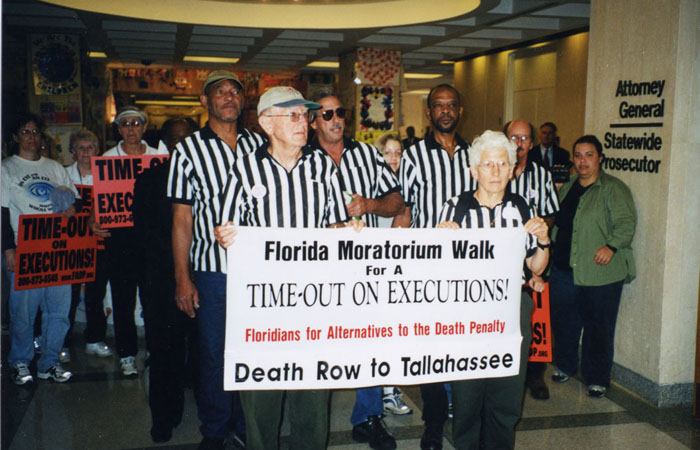Collections : [National Death Penalty Archive]
National Death Penalty Archive
Researchers, writers, activists, and records on capital punishment in the United States.
Search Constraints
Start Over You searched for: Collecting Area National Death Penalty Archive Remove constraint Collecting Area: National Death Penalty Archive Date range 1995 to 1999 Remove constraint Date range: <span class="from" data-blrl-begin="1995">1995</span> to <span class="to" data-blrl-end="1999">1999</span>Search Results
Administration, 1988-2008 1.0 cubic ft.
This series consists of administrative materials of Virginians for Alternatives to the Death Penalty including meeting minutes, calendars, and notes.
Administrative Files, 1977-2005, Undated 1.9 cubic ft.
Series 1 contains documents relating to the internal procedures and finances of Murder Victims' Families for reconciliation. While there are a few documents that provide evidence of how the organization was set up, the majority of documents focus on hiring, day to day finances, and committee meetings. There are also materials related to strategic planning and the creation of by-laws and organizational procedure. Although the series contains materials from 1977 to 2005, the bulk of the material is from 1996 to 2004. Contained in this series are meeting agendas, meeting minutes, meeting summaries, correspondence, annual reports, ballots, evaluation forms, applications, newsletters, fliers, budgets, financial reports, manuals, by-laws, pamphlets, drafts, notes, reports, contracts, forms, resumes, proofs, floppy disks, and cassettes.
Alvin Ford Papers, 1965-1995 5.4 cubic ft.
Bill Babbitt Collection, 1967-2016 4.82 cubic ft.
Bill Pelke Papers, 1965-2007, Undated 18.32 cubic feet
Biographical, 1950-1998 0.17 cubic ft.
This series contains two large bibliographies of Ernest van den Haag's writings. The first bibliography covers his works from 1950-1982. The second includes his writings up to 1998. These bibliographies organize his writings alphabetically by topic and each publication includes an assigned number. These numbers do not reflect a strict, but rather general chronological order (i.e. number one was published in 1968 while number two was published in 1954). The numbering system probably reflects the order in which the articles were begun. Some were published quickly while others took longer. This series also contains van den Haag's curriculum vitae from 1973-1998 as well as short biographies from 1973-1989.
